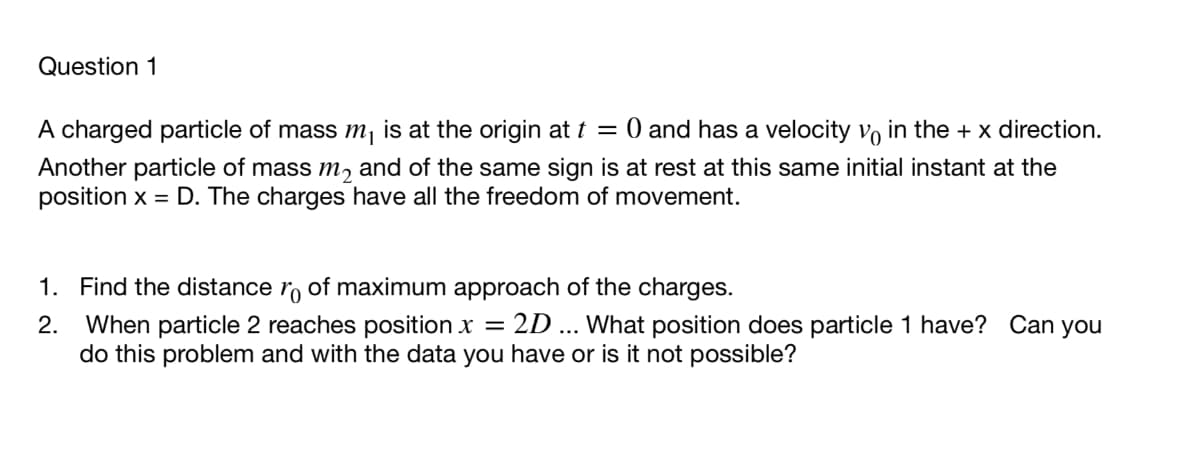Question 1 A charged particle of mass m is at the origin at t = 0 and has a velocity vo in the + x direction. Another particle of mass m, and of the same sign is at rest at this same initial instant at the position x = D. The charges have all the freedom of movement. 1. Find the distance ro of maximum approach of the charges. 2. 2D ... What position does particle 1 have? Can you When particle 2 reaches position x = do this problem and with the data you have or is it not possible?
Question 1 A charged particle of mass m is at the origin at t = 0 and has a velocity vo in the + x direction. Another particle of mass m, and of the same sign is at rest at this same initial instant at the position x = D. The charges have all the freedom of movement. 1. Find the distance ro of maximum approach of the charges. 2. 2D ... What position does particle 1 have? Can you When particle 2 reaches position x = do this problem and with the data you have or is it not possible?
Related questions
Question
B1

Transcribed Image Text:Question 1
A charged particle of mass m is at the origin at t = 0 and has a velocity vo in the + x direction.
Another particle of mass m, and of the same sign is at rest at this same initial instant at the
position x = D. The charges have all the freedom of movement.
1. Find the distance ro of maximum approach of the charges.
2.
2D ... What position does particle 1 have? Can you
When particle 2 reaches position x =
do this problem and with the data you have or is it not possible?
Expert Solution
This question has been solved!
Explore an expertly crafted, step-by-step solution for a thorough understanding of key concepts.
Step by step
Solved in 2 steps with 2 images
